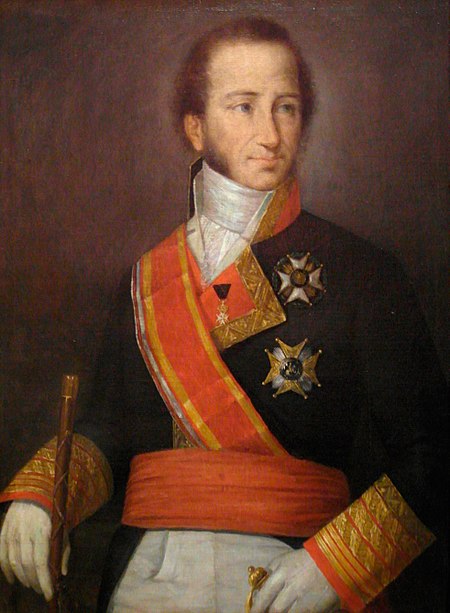Descent of the Ganges (Mahabalipuram)
| |||||||||||||||||||
Read other articles:

Pour les articles homonymes, voir Parti libéral démocrate. Libéraux-démocratesLiberal Democrats Logotype officiel. Présentation Chef Edward Davey Fondation 2 mars 1988 Siège 8-10 Great George Street, Londres Chef adjointe Daisy Cooper Positionnement Centre[1],[2],[3],[4] à centre gauche[5],[6] Idéologie LibéralismeSocial-libéralismeSécularismeFédéralisme britanniqueEurophilie Affiliation européenne ALDE Affiliation internationale Internationale libérale Couleurs Or Site web libdem…

2016年美國總統選舉 ← 2012 2016年11月8日 2020 → 538個選舉人團席位獲勝需270票民意調查投票率55.7%[1][2] ▲ 0.8 % 获提名人 唐納·川普 希拉莉·克林頓 政党 共和黨 民主党 家鄉州 紐約州 紐約州 竞选搭档 迈克·彭斯 蒂姆·凱恩 选举人票 304[3][4][註 1] 227[5] 胜出州/省 30 + 緬-2 20 + DC 民選得票 62,984,828[6] 65,853,514[6] 得…

Mathematical model used to describe active matter. The Vicsek model is a mathematical model used to describe active matter. One motivation of the study of active matter by physicists is the rich phenomenology associated to this field. Collective motion and swarming are among the most studied phenomena. Within the huge number of models that have been developed to catch such behavior from a microscopic description, the most famous is the model introduced by Tamás Vicsek et al. in 1995.[1]…

كهف بوزيرمعلومات عامةالبلد أذربيجان الإحداثيات 39°N 48°E / 39°N 48°E / 39; 48 الطول 17 متر الاكتشاف 1985 تعديل - تعديل مصدري - تعديل ويكي بيانات هذه المقالة تحتاج للمزيد من الوصلات للمقالات الأخرى للمساعدة في ترابط مقالات الموسوعة. فضلًا ساعد في تحسين هذه المقالة بإضافة و…

烏克蘭總理Прем'єр-міністр України烏克蘭國徽現任杰尼斯·什米加尔自2020年3月4日任命者烏克蘭總統任期總統任命首任維托爾德·福金设立1991年11月后继职位無网站www.kmu.gov.ua/control/en/(英文) 乌克兰 乌克兰政府与政治系列条目 宪法 政府 总统 弗拉基米尔·泽连斯基 總統辦公室 国家安全与国防事务委员会 总统代表(英语:Representatives of the President of Ukraine) 总理…

Este artículo o sección necesita referencias que aparezcan en una publicación acreditada. Busca fuentes: «Iglesia del Sagrado Corazón (Córdoba)» – noticias · libros · académico · imágenesEste aviso fue puesto el 2 de mayo de 2013. Iglesia del Sagrado Corazón de Jesús LocalizaciónPaís ArgentinaDivisión CórdobaCoordenadas 31°25′27″S 64°11′09″O / -31.42425556, -64.18583333Información religiosaCulto catolicismoDiócesis Arquidiócesis…

This article relies excessively on references to primary sources. Please improve this article by adding secondary or tertiary sources. Find sources: 2010–11 Simurq PFC season – news · newspapers · books · scholar · JSTOR (January 2014) (Learn how and when to remove this message) Simurq 2010–11 football seasonSimurq2010–11 seasonChairmanZaur MammadovManagerGjoko HadžievskiStadiumZaqatala City StadiumPremier League11thAzerbaijan CupLast 16 vs Abshero…

Michał KlepfiszBornApril 17, 1913Warsaw, Congress PolandDiedApril 20, 1943(1943-04-20) (aged 30)Warsaw, Nazi occupied PolandPlace of burialOkopowa Street Jewish CemeteryAllegiancePolish resistanceService/branch ŻOBBattles/warsWorld War II Warsaw Ghetto Uprising † AwardsVirtuti Militari Klepfisz's cenotaph Michał Klepfisz (Warsaw, 17 April 1913[1] – 20 April 1943, Warsaw)[2] was a chemical engineer, activist for the Bund, and member of the Jewish Morgenstern …

Spanish commander and explorer Portrait of Cayetano Valdés y Flores painted by José Roldán y Martínez, Sevilla, 1847 Cayetano Valdés y Flores Bazán (1767–1835) was a commander of the Spanish Navy, explorer, and captain general who served in the French Revolutionary and Napoleonic Wars, fighting for both sides at different times due to the changing fortunes of Spain in the conflict. He took part in a number of naval battles, including the Great Siege of Gibraltar, the Battle of Cape S…

Computer-based technologyIT redirects here. For the customer service colloquially referred to as IT, see Tech support. For other uses, see It (disambiguation). Infotech redirects here. For the Indian company, see Cyient. For the Hong Kong constituency, see Information Technology (constituency). Information science General aspects Access Architecture Behavior Management Retrieval Seeking Society Knowledge organization Ontology Philosophy Science and technology studies Taxonomy Related fields and …

Tour of AustriaRace detailsDateEarly JulyRegionAustriaLocal name(s)Internationale Österreich Rundfahrt (in German)DisciplineRoadCompetitionUCI Europe TourTypeStage raceWeb siteoesterreich-rundfahrt.at HistoryFirst edition1949 (1949)Editions71 (as of 2019)First winner Richard Menapace (AUT)Most wins Wolfgang Steinmayr (AUT) (4 wins)Most recent Jhonatan Narváez (ECU) The 60th Tour of Austria in 2008 Victory podium at the 2009 Tour …

54th quadrennial U.S. presidential election For related races, see 2000 United States elections. 2000 United States presidential election ← 1996 November 7, 2000 2004 → 538 members of the Electoral College[a]270 electoral votes needed to winTurnout54.2%[1] 2.5 pp Nominee George W. Bush Al Gore Party Republican Democratic Home state Texas Tennessee Running mate Dick Cheney Joe Lieberman Electoral vote 271 266[b] States carri…

Type of organized but unincorporated dependent territory of the US For the U.S. states that designate themselves as commonwealths, see Commonwealth (U.S. state). This article is part of a series onPolitical divisions ofthe United States First level State (Commonwealth) Federal district Territory (Commonwealth) Indian reservation (list) / Hawaiian home land / Alaska Native tribal entity / Pueblo / Off-reservation trust land / Tribal Jurisdictional Area Second level County / Parish / Borough Unorg…

American class I railroad company in operation from 1968 to 1976 Penn Central Transportation CompanyOverviewHeadquartersPhiladelphia, PennsylvaniaReporting markPCLocaleConnecticut Delaware Illinois Indiana Kentucky Maryland Massachusetts MichiganMissouriNew YorkNew JerseyOhioOntario Pennsylvania Quebec Rhode Island Washington, DC West VirginiaDates of operationFebruary 1, 1968–February 21, 1976PredecessorPennsylvania RailroadNew York Central SystemNew York, New Haven and Hartford…

See also: Healthcare reform in the United States, Health care in the United States, and Health insurance coverage in the United States This article needs to be updated. Please help update this article to reflect recent events or newly available information. (March 2018) Healthcare in the United States Government health programs Federal Employees Health Benefits Program (FEHBP) Indian Health Service (IHS) Medicaid / State Health Insurance Assistance Program (SHIP) Medicare Prescription Assistance…

Head of the Catholic Church from 1185 to 1187 This article has multiple issues. Please help improve it or discuss these issues on the talk page. (Learn how and when to remove these template messages) This article needs additional citations for verification. Please help improve this article by adding citations to reliable sources. Unsourced material may be challenged and removed.Find sources: Pope Urban III – news · newspapers · books · scholar · JSTOR (Ma…

عدوى المستشفيات أماكن ملوثة في المستشفيات تؤدي إلى عدوى المستشفياتأماكن ملوثة في المستشفيات تؤدي إلى عدوى المستشفيات معلومات عامة الاختصاص أمراض معدية من أنواع عدوى، وأثر ضائر تعديل مصدري - تعديل عدوى المستشفيات أو الخمج المشفوي (بالإنجليزية: Nosocomial Infection) هي عد�…

Fucales Ascophyllum nodosum Klasifikasi ilmiah Domain: Eukaryota Kerajaan: Chromalveolata Filum: Heterokontophyta Kelas: Phaeophyceae Ordo: FucalesKylin Famili Bifurcariopsidaceae Cystoseiraceae Durvillaeaceae Fucaceae Himanthaliaceae Hormosiraceae Notheiaceae Sargassaceae Seirococcaceae Xiphophoraceae Fucales adalah ordo dalam filum Phaeophyta atau ganggang coklat. Anggota ordo ini adalah Fucoid. Referensi Fletcher, R.L.1987. Seaweeds of the British Isles. Volume 3, Part 1. British Museum (Natu…

Interstate Highway in Minnesota, United States Interstate 35EI-35E highlighted in redRoute informationMaintained by MnDOTLength39.340 mi[1] (63.312 km)NHSEntire routeRestrictionsTrucks over 9,000 lb (4,100 kg) gross weight prohibited between MN 5 and I-94[2]Major junctionsSouth end I-35 / I-35W in BurnsvilleMajor intersections I-494 in Mendota Heights I-94 / US 10 / US 52 in Saint Paul I-694 / US 10 in Little C…

Railway station in West Bengal, India Dhamua Kolkata Suburban Railway StationDhamua Railway StationGeneral informationLocationSherpur-Dhamua Road, Dhamua, South 24 Parganas, West BengalIndiaCoordinates22°17′23″N 88°23′31″E / 22.289831°N 88.391934°E / 22.289831; 88.391934Elevation8 metres (26 ft)Owned byIndian RailwaysOperated byEastern RailwayLine(s)Diamond Harbour Branch linePlatforms2Tracks2ConstructionStructure typeStandard (on-ground station)ParkingNo…








